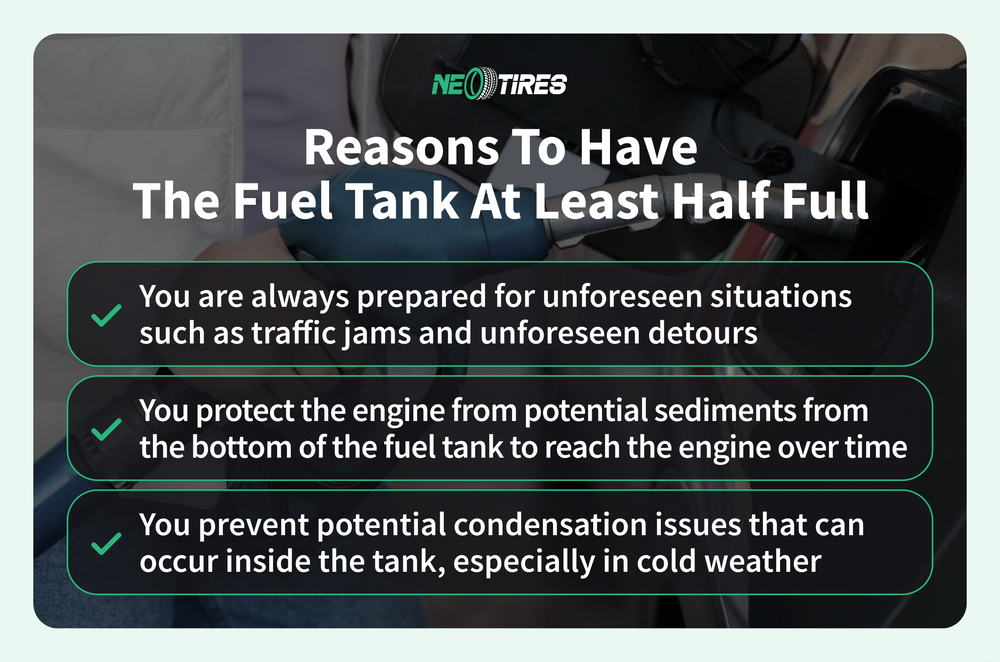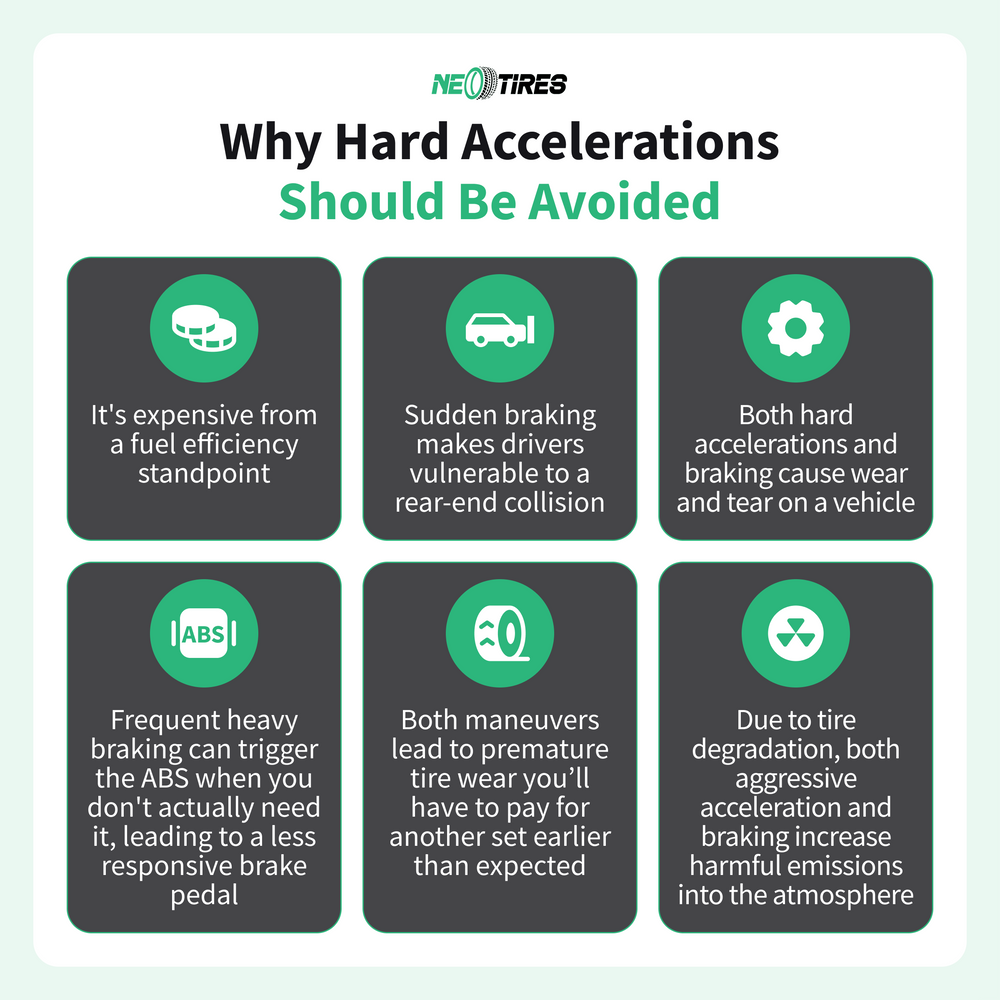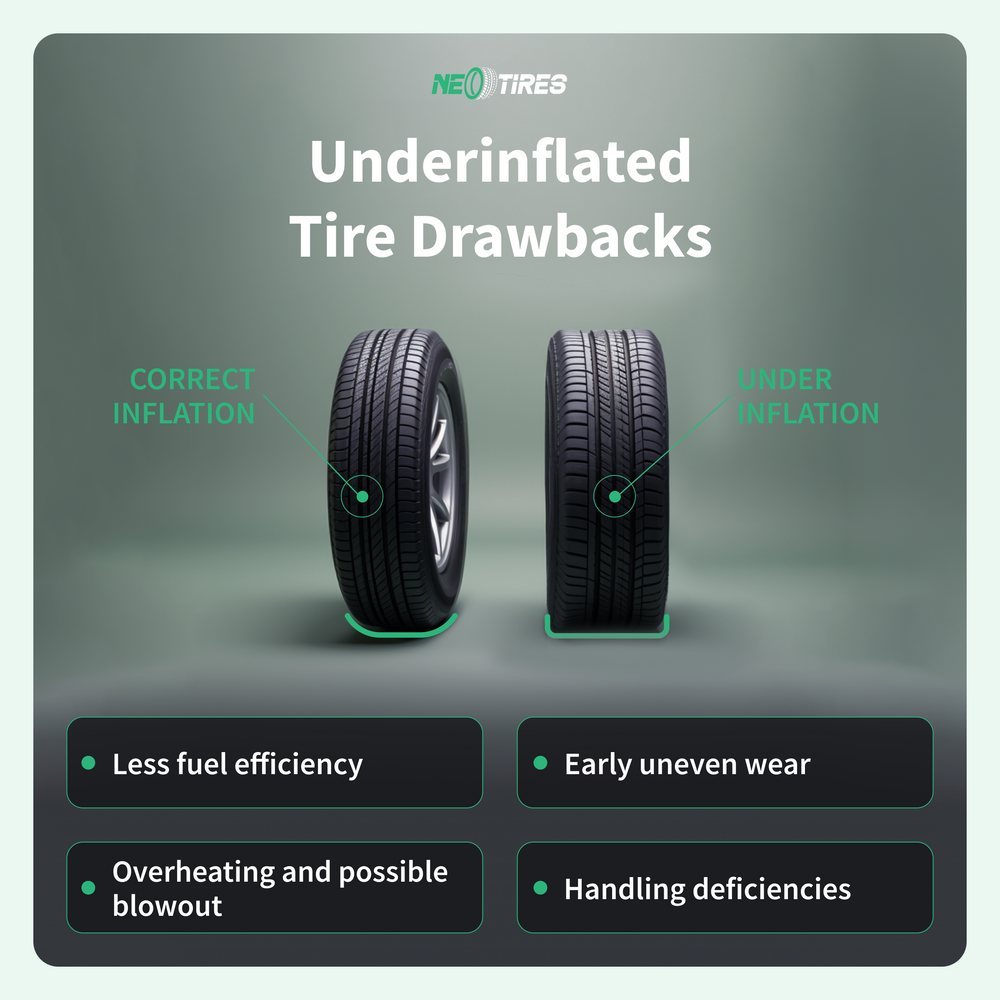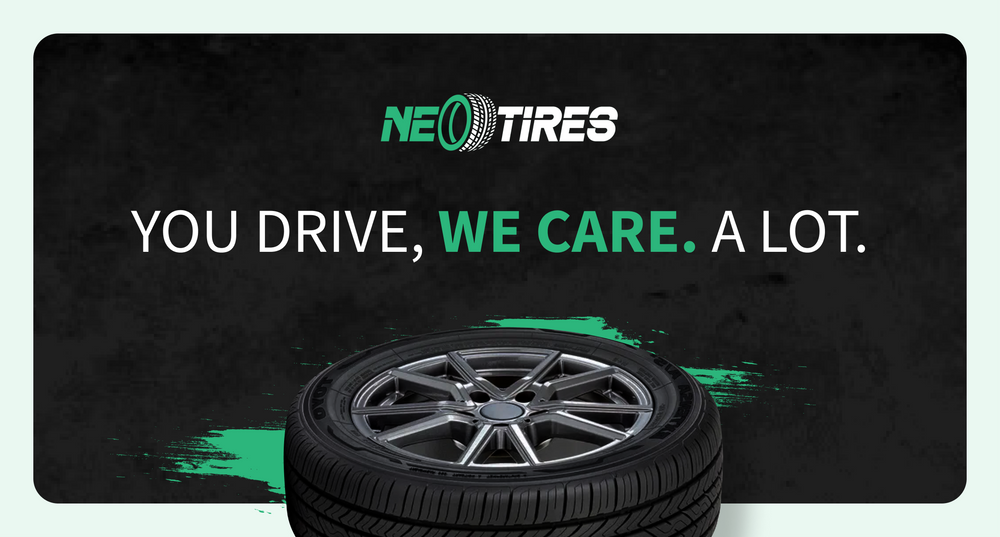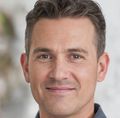According to CNN, the average price for regular gasoline across the country hit an all-time high of $5.02 per gallon on June 14, 2022. Although the price has dropped considerably since then, the current average of $3.35 per gallon can still be expensive, especially for drivers who travel long distances.
This article focuses on the best practices to reduce gas consumption and optimize the fueling burden. A good understanding of reducing fuel consumption will help drivers optimize their expenses without compromising ride quality.
How To Improve Car Fuel Economy
Drivers can improve car economy by ensuring the tank is at least half full, reducing excessive idling, opting for conscious driving habits (e.g., avoiding aggressive driving), adhering to speed and load limits, ensuring optimal tire pressure and tire condition, using cruise control on highways, avoiding AC when possible, and keeping the vehicle well-maintained through regular service.
Have The Fuel Tank At Least Half Full
Keeping the fuel tank at least half full reduces the evaporation of gasoline, especially in warmer conditions, which contributes to less fuel consumption. Low fuel levels expose the pump to air, causing it to work less efficiently and overheat.
Having enough fuel in the tank is essential to avoid fuel shortages, especially when driving long distances or in congested traffic when the fuel consumption is typically higher.
Reduce Excessive Idling
Excessive idling impacts fuel burning as the fuel consumption is directly related to engine RPM (revolutions per minute). Avoid idling for too long to reduce fuel consumption when possible. It's more fuel-efficient to turn off and restart the engine with long stops. For example, the vehicle consumes about o.5 gallons of fuel if idling for about an hour.
Avoid Aggressive Driving
Hard braking and aggressive speeding decrease fuel efficiency by putting excessive strain on the vehicle engine. Fuel consumption increases by 15% to 30% on highways and 10% to 40% in stop-and-go traffic with aggressive driving, the Department of Energy says. Aggressive driving refers to braking late and accelerating hard, sudden lane changes, or tailgating- all lead to fuel consumption.
| Driving Style | Fuel Economy Impact |
| Aggressive driving | Can lower fuel economy by up to 30% on highways and 40% in cities |
| Smooth driving | Helps maintain consistent fuel consumption |
Tab. 1. Driving style vs fuel economy impact
Maintain Speed Limits
Speed affects fuel consumption due to increased engine load and higher aerodynamic drag. While different vehicles reach optimal fuel consumption at different speeds, most become fuel-efficient between 45 and 65 mph. The engine works harder whenever passing this average speed limit, leading to higher fuel consumption. SUVs and light trucks typically have lower fuel efficiency rates at all speeds compared to passenger cars due to their less aerodynamic design and more weight.
| Vehicle Type | Speed (mph) | MPG | Fuel Consumption Rate | Notes |
| Passenger Cars | 50 | 34 | Optimal | Optimal speed for fuel efficiency for most cars |
| 65 | 30 | Increased by ~10% | Aerodynamic drag starts to significantly affect fuel consumption | |
| 75 | 26 | Increased by ~30% | Higher speeds lead to increased engine workload and aerodynamic drag | |
| SUVs | 50 | 28 | Optimal | Larger bodies reduce aerodynamic efficiency at higher speeds |
| 65 | 24 | Increased by ~15% | Larger engines also consume more fuel at non-optimal speeds | |
| 75 | 20 | Increased by ~40% | The drag coefficient and engine size contribute to rapid efficiency losses | |
| Light Trucks | 50 | 22 | Optimal | Similar to SUVs, designed for load capacity rather than aerodynamic efficiency. |
| 65 | 18 | Increased by ~18% | Heavier vehicles face more resistance, impacting efficiency at higher speeds | |
| 75 | 15 | Increased by ~50% | Exponential efficiency decline due to increased energy demands to overcome drag |
Tab. 2. Fuel consumption variation in different speed ranges speed for different types of vehicles. The relationship between driving speed and fuel efficiency for gasoline-powered passenger cars, SUVs, and light trucks under typical conditions. Sourced from Alternative Fuels Data Center and the Bureau of Transportation Statistics
Maintain Load Limits
The additional load on the vehicle generates more inertia and higher rolling resistance, leading to higher fuel consumption. The MPG is even higher with frequent stops and goes as the load is accelerated and decelerated frequently at the cost of additional fuel. An extra load of about 110 lbs increases fuel consumption by 1-2%. Drivers should remove heavy items like unnecessary equipment, roof racks, and cargo boxes to optimize fuel efficiency.
Ensure Optimal Tire Pressure
Incorrect tire pressure increases vehicle fuel consumption by increasing vehicle drag and reducing rolling resistance. Tires with low pressure generate higher friction, requiring the engine to consume more energy to propel them forward. According to the NHTSA, fuel economy drops to 0.3% with every 1% decrease in tire pressure. Tire overinflation increases fuel economy to an extent, but it affects handling, braking, and tread wear. The disadvantages of overinflating tires significantly outweigh the potential fuel economy advantage, which is why it should be avoided.
Use Cruise Control
Using cruise control can help reduce fuel consumption due to consistent speed. Fuel economy can be optimized by an average of 7-14% on gas with rare acceleration and braking when using cruise control. Cruise control is particularly useful on highways; it becomes ineffective in active traffic dynamics due to frequent acceleration and deceleration, leading to more fuel burning.
Turn Off The AC
Air conditioning increases fuel consumption by increasing the load on the engine. With AC turned on, the engine burns more fuel to maintain vehicle performance while cooling the interior. Turning AC off when possible helps improve MPG by up to 20% or between o.2 to 0.4 liters of fuel per hour, depending on vehicle size, AC range, and outdoor temperature. Consider turning the AC off when possible, whenever it doesn't affect driving comfort too much (excessive cabin heat, dehydration due to heat, driving fatigue).
Car Fuel Economy: FAQs
What Makes a Car More Fuel Efficient?
The following practices make a car more fuel-efficient: proper tire inflation, cruise control on highways, proper tire load and speed limits, judicious driving (avoiding harsh acceleration, late braking, and aggressive cornering), enough fuel in the tank (at least half-full), and no idling.
What Is Good Fuel Consumption In a Car?
The standard fuel consumption ranges between 25-35 mpg for small passenger vehicles, 16-26 mpg for CUVs and SUVs, 15-22 mpg for light trucks, 45-55 for hybrid vehicles, and 100-120 MPGe for electric vehicles. Driving behavior (judicious vs aggressive), fuel quality, vehicle maintenance, and environmental conditions (terrain, traffic, weather) influence the overall vehicle fuel consumption.
| Vehicle Type | Standard MPG | Hot Weather vs Cold Weather Impact | Traffic Conditions Impact |
| Compact Car | 25-35 | +15%/+10% fuel consumption | +25% in stop-and-go traffic |
| Midsize Sedan | 25-30 | +12%/+8% fuel consumption | +22% in congested conditions |
| Compact SUV | 22-26 | +18%/+12% fuel consumption | +30% in heavy traffic |
| Full-size SUV | 16-20 | +20%/+25% fuel consumption | +35% in urban driving |
| Pickup Truck | 15-20 | +22%/+18% fuel consumption | +40% in congested areas |
| EVs | 100-120 MPGe | +25%/+15% range reduction | +20% efficiency loss |
Tab. 3. Fuel efficiency of different vehicles and impact of weather and traffic conditions. Sourced from EPA and DOE, these measurements are approximate and can vary depending on multiple factors
Does AC Consume Fuel In Cars?
Yes, turning the AC on increases vehicle fuel consumption by 20-25% due to the additional load on the engine. For fuel economy purposes, turn the AC off whenever possible.
Better Tires for a Better Fuel Economy!
Rolling resistance contributes significantly to fuel efficiency. To optimize your vehicle's gas mileage, switch to fuel-efficient tires.
At NeoTires, you can find energy-efficient tire options to get the most out of every gallon. Contact us for personalized recommendations based on your vehicle type, budget, and driving conditions!
Why Trust Us?
Here, you have a wide range of products from reputable and reliable brands. In addition, you get competitive prices and advantageous buying conditions. Our trained and qualified assistants and our mechanics, will help you select the right product for your specific driving needs. While we cannot change your driving conditions, we can influence your vehicle's performance. Drive safe and choose your tires wisely!





